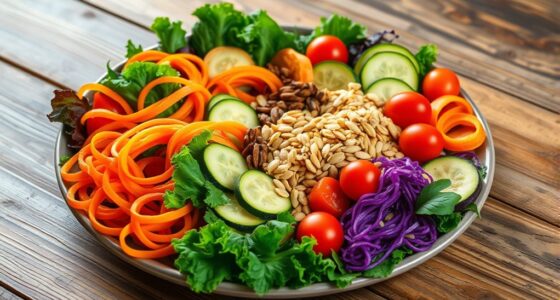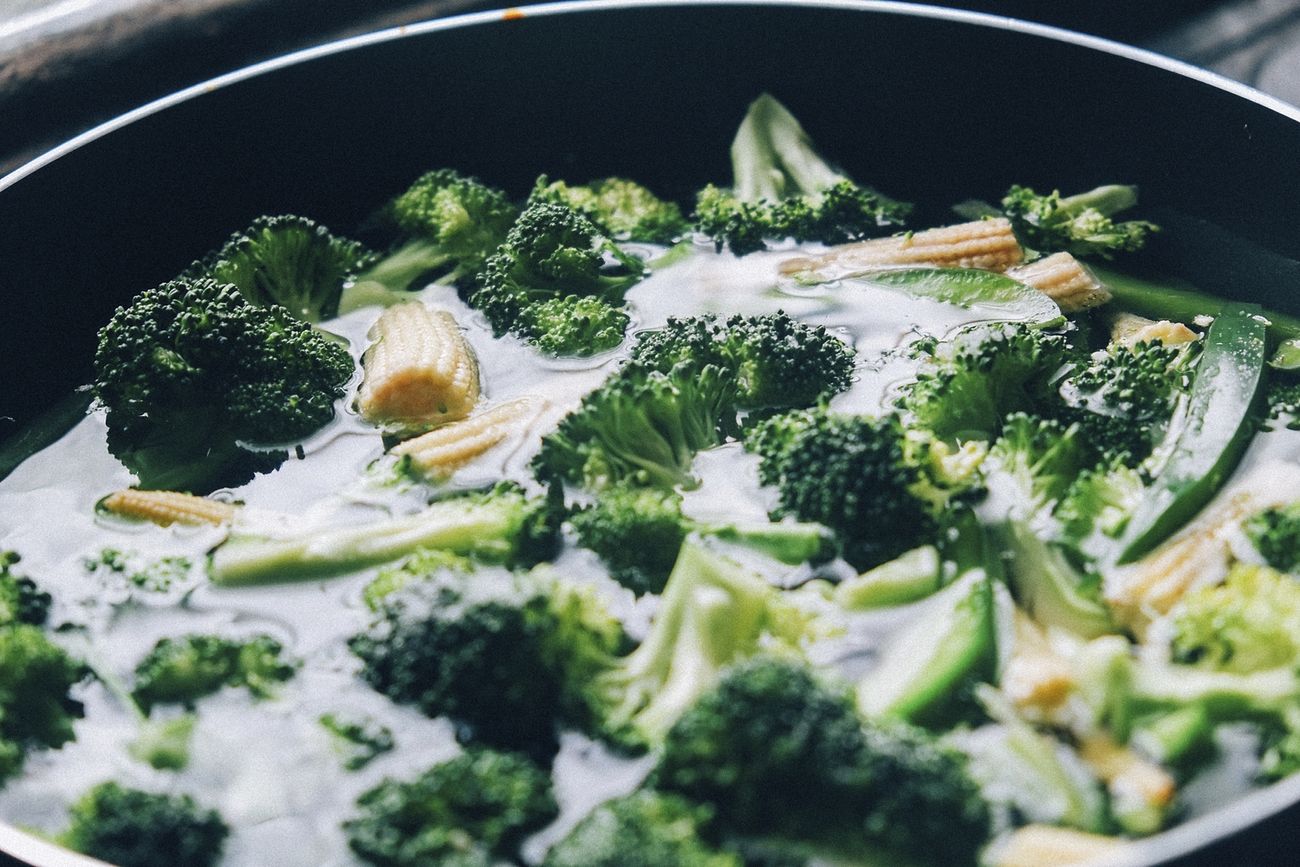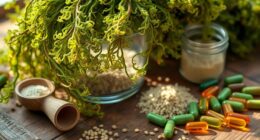Fresh red bell peppers are packed with essential nutrients and antioxidants. However, certain cooking methods can significantly reduce their nutritional value.
For example, pre-roasted peppers can often lose up to 25 percent of their vitamin C content due to cooking methods and how long the vegetables are cooked.
| Nutrient (per 1 medium pepper, or 164 grams) | Raw Red Pepper |
|---|---|
| Calories | 37 |
| Carbohydrates | 9 g |
| Fiber | 3 g |
| Protein | 1 g |
| Fat | 0 g |
| Vitamin A | 157% DV |
| Vitamin C | 317% DV |
| Vitamin K | 7% DV |
| Folate | 9% DV |
| Potassium | 6% DV |
| Magnesium | 3% DV |
| Iron | 2% DV |
Note that these values are approximate and may vary depending on the specific variety of red pepper. Red peppers are a low-calorie vegetable that is particularly rich in vitamin C and vitamin A. They are also a good source of fiber and other important micronutrients. Raw red peppers can be enjoyed in salads, sandwiches, and other dishes, or can be used as a snack with hummus or other dips.
Vitamin C
Vitamin C is an incredibly potent antioxidant, helping combat cell damage, boosting the immune system, and decreasing inflammation. It’s found in many fruits and vegetables such as red peppers.
Raw red peppers contain more vitamin C than any other variety of pepper, with one cup providing 317 percent of your daily recommended value for this nutrient.
According to the Arthritis Foundation, a high intake of vitamin C may help reduce the risk of certain chronic and aging-related health conditions like osteoarthritis. This is because vitamin C protects bone and cartilage cells.
This nutrient also protects the heart by decreasing the risk of cardiovascular diseases like stroke and coronary artery disease. Furthermore, vitamin K regulates blood pressure and improves lipid levels.
Furthermore, vitamin B6 assists iron absorption to prevent iron deficiency anemia and help speed up recovery from mild cases of it.
Red and yellow bell peppers possess antioxidants lutein and zeaxanthin, which may protect against cataracts and macular degeneration – two conditions which could cause vision loss in older adults. By eating red or yellow bell peppers regularly, you’re helping reduce your risk for these eye disorders.
Bell peppers provide vitamin A through beta carotene, which your body converts into retinal. Together with lutein and zeaxanthin, this vitamin may help protect your eyes from age-related macular degeneration, cataracts, and other eye diseases.
This nutrient is known to promote the health of your teeth and gums. It plays a crucial role in proper tooth development as well as helping to prevent infections that could lead to gum disease.
Raw red peppers also provide folate, which may reduce your risk for heart disease and certain cancers. It’s especially important to get enough folic acid during pregnancy since it affects your baby’s brain development as well as their nervous system development.
Furthermore, raw red peppers retain their vitamin C without being destroyed by heat, making them suitable for consumption both fresh and dried.
Carotenoids
Red peppers are an excellent source of carotenoids, which have numerous health benefits. They contain lycopene, beta-carotene and lutein which act as antioxidants to shield the body against degenerative diseases while aiding in the development of a strong immune system.
These nutrients have also been linked to reduced cardiovascular disease risk, reduced inflammation and improved brain function; hence it’s essential that we consume them in sufficient amounts.
This study examined the level of carotenoids in 11 pepper varieties grown at two locations in South Korea (IS and YY) over three years. Specifically, we measured a-carotene, b-carotene, zeaxanthin, violaxanthin, lutein and capsanthin content within fruit pericarps at week 0 as well as after storage under cool temperatures (-7 degC) for three weeks.
Results revealed that peppers from IS had higher a-carotene and b-carotene levels than those from YY. Furthermore, zeaxanthin content was lower in IS peppers compared to those from XY, while lutein content was lower among peppers from IS than HBC.
The content of carotenoids was greatly influenced by three factors: location, year and the interaction between them. Variation in a-carotene and lutein was mainly caused by the interaction between location and year while variation in b-carotene and zeaxanthin was due to both variety and environment interacting together.
To differentiate the effects of variety and environment on carotenoids levels, a principal component analysis (PCA) was conducted using OPLS 1. This model allowed us to separate the effects of variety and environment on a-carotene and capsanthin concentrations (Fig. 1b).
A statistical analysis of total phenolic acids revealed the main sources of variation. Generally, year and variety interactions accounted for most variations in p-coumaric acid and ferulic acid; however, an interaction between year and environment had significant effects on syringic acid and sinapic acid concentrations.
This study revealed that the level of carotenoids in red peppers was mainly determined by genotype and environment, with an obvious interaction between them. This can be interpreted as an explanation for natural variations in pepper’s antioxidant properties based on variety and environment – an influential factor when it comes to encouraging health-promoting behaviors among humans.
Potassium
Red peppers are an excellent way to boost your vitamin C intake. This nutrient helps protect against chronic illnesses such as heart disease, cancer and osteoporosis by providing antioxidants and carotenoids. Plus they’re delicious!
They provide a great source of potassium, which supports the body’s cardiovascular system. Furthermore, they’re low in sodium which may be beneficial to those with kidney disease or high blood pressure.
For people with kidney issues, getting enough potassium in your diet is especially essential. Not only does it help regulate blood pressure, but it can also prevent kidney stones which cause pain and swelling in the legs.
Bell peppers are an excellent way to get your daily serving of potassium by including them in your meals. Furthermore, they’re packed full of fiber which promotes gut health and helps lower levels of low-density lipoprotein cholesterol.
Raw red peppers are an excellent source of potassium, vitamin C and A as well as iron. These nutrients support strong bones and muscles as well as a robust immune system.
These fruits and vegetables are also an excellent source of vitamins B and K, which support a healthy nervous system and blood vessels. Eating foods rich in these essential nutrients may reduce the risk of certain chronic health conditions like rheumatoid arthritis.
Potassium is an essential mineral for eye health. It may protect against macular degeneration and other types of eye damage. Furthermore, potassium lowers blood pressure to protect against heart attacks and strokes.
It’s also an effective antioxidant that combats cancer-causing free radicals and may prevent dementia or Alzheimer’s disease. Furthermore, beta-cryptoxanthin found in this fruit reduces your risk for inflammatory health conditions.
Red peppers (74 grams) provide 156 mg of potassium – not quite as much as strawberries or pineapple, but still an impressive source of the mineral.
The USDA suggests consuming at least 4.5 grams of potassium daily. You can meet this goal by eating either raw or cooked foods.
When purchasing raw red peppers, opt for those that have a firm texture and smooth skin. Avoid those with wrinkled or soft skins as these may contain harmful microorganisms that could cause illness or food poisoning.
Iron
Raw red peppers are an excellent source of iron, providing about 159 percent of your recommended daily intake (RDI) in half a cup. This nutrient can help prevent iron deficiency anemia – when your body’s capacity for oxygen transport is impaired – by replenishing iron levels in your system.
Iron absorption from your intestines is improved when you eat more fruits and vegetables, particularly those rich in vitamin C. To increase this beneficial iron intake, incorporate more fruits and vegetables into your meals for added nutritional benefit.
Vitamin C is an incredibly potent antioxidant, fighting cell damage and supporting healthy immune function. It may also reduce LDL cholesterol levels and thus lower the risk of heart disease and certain cancers.
Vitamin C can also be found in citrus fruits such as oranges and grapefruits; however, it’s best to consume these items in moderation.
Red bell peppers also provide fiber, which helps regulate your bowel movements and may reduce the risk of colon cancer. A medium-sized raw red pepper offers around 2.5 g of this beneficial nutrient – or about 10% of your recommended daily intake (RDI).
To maximize the nutritional value of your peppers, select firm ones with a bright green stem. Additionally, look for plump peppers with smooth skin–avoiding ones that have wrinkles or blemishes.
Finally, cook your peppers gently to extract their maximum nutritional value. Lightly cooking will break down their cell walls and make carotenoids easier for your body to absorb.
Add a pinch of black pepper or red paprika to your cooked or raw bell peppers for additional health benefits. These spices contain high levels of lutein and quercetin, polyphenol antioxidants which have been demonstrated to lower blood pressure, protect against heart disease, cancer, and other chronic illnesses.
Aurelia is the Editor-in-Chief of The Graceful Kitchen, a vegan lifestyle blog that focuses on delicious, nutritious, and ethical eating. A lifelong vegan, Aurelia is passionate about sharing her love of plant-based cuisine with others. She is a regular contributor to several online and print publications, and has been interviewed by major news outlets about the benefits of a vegan diet. In her free time, Aurelia enjoys cooking, hiking, and spending time with her cats.










